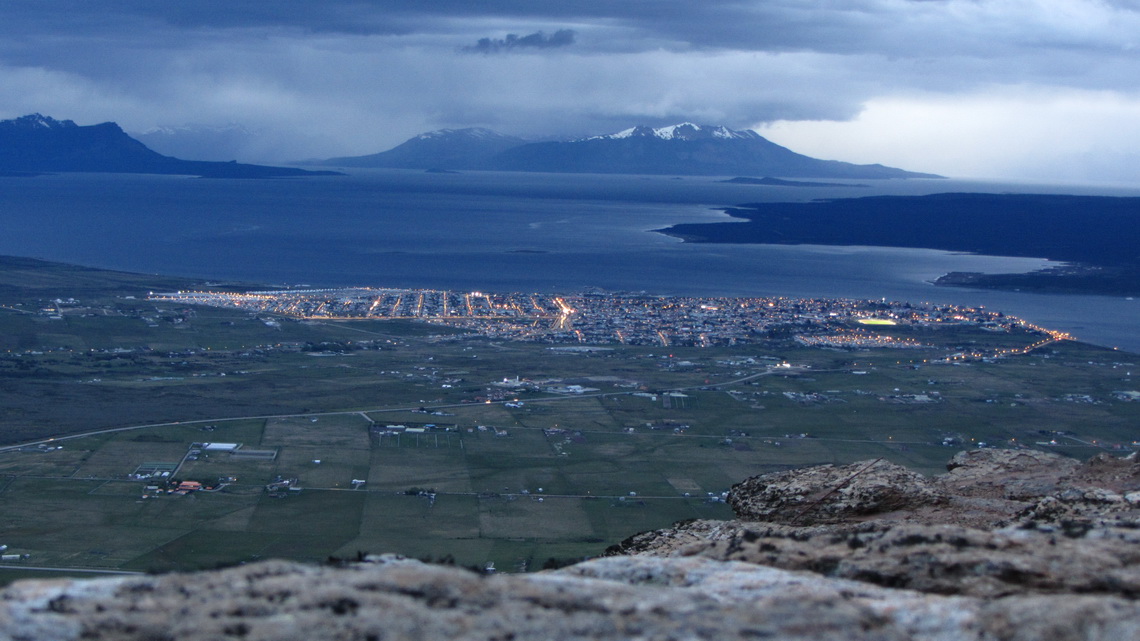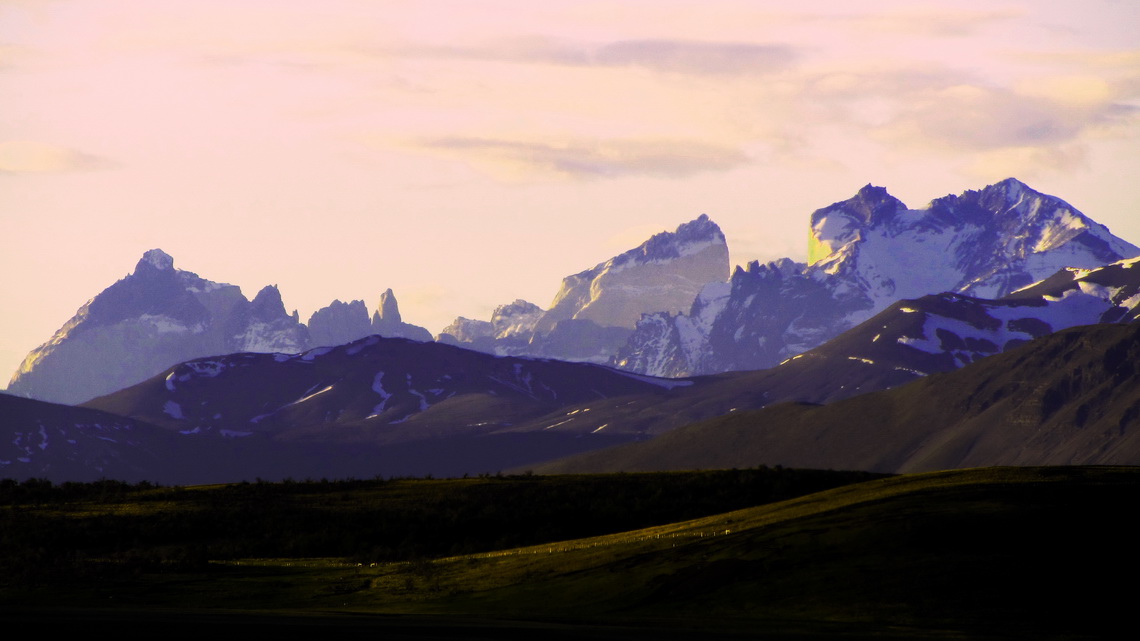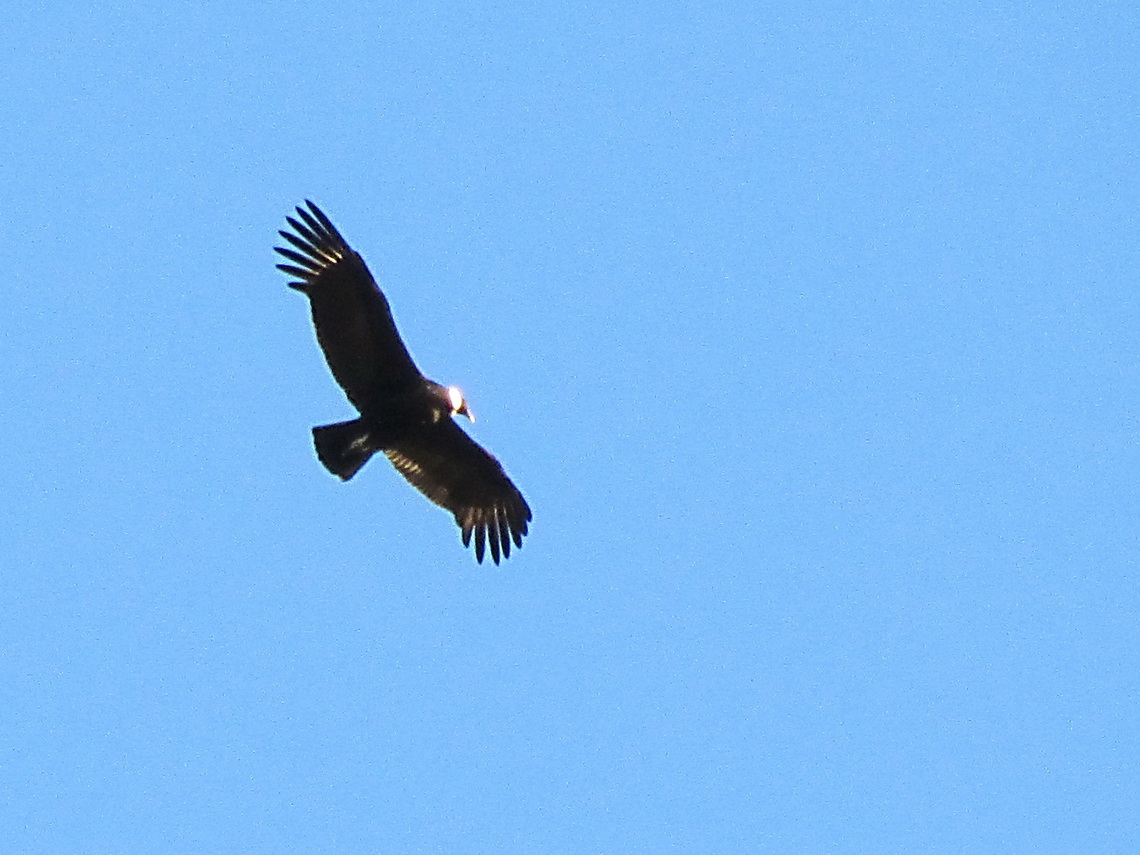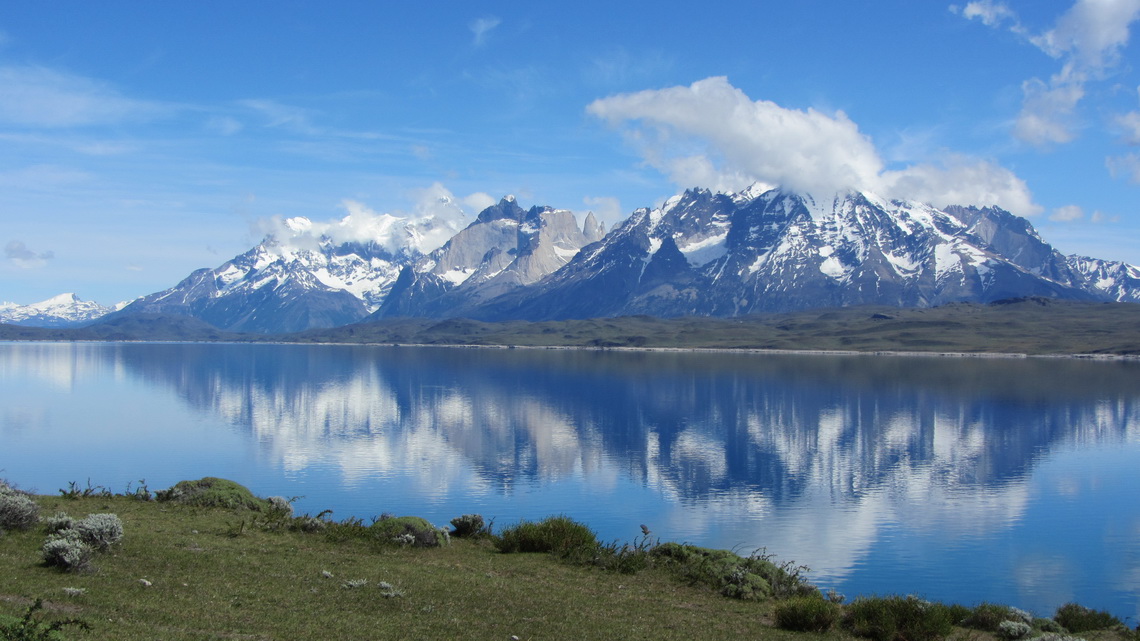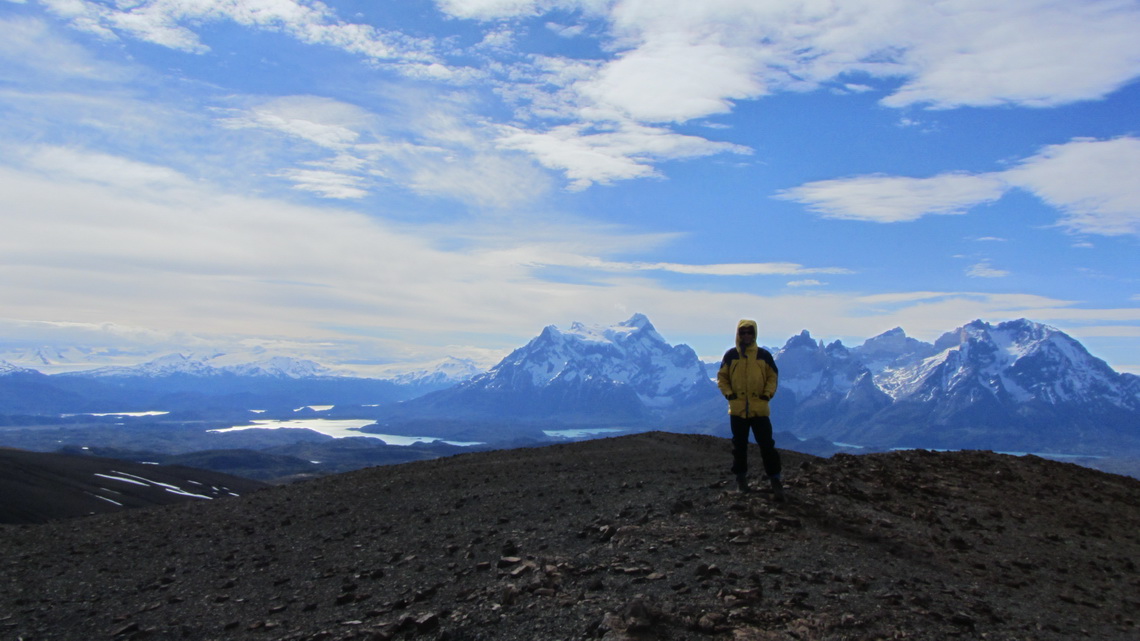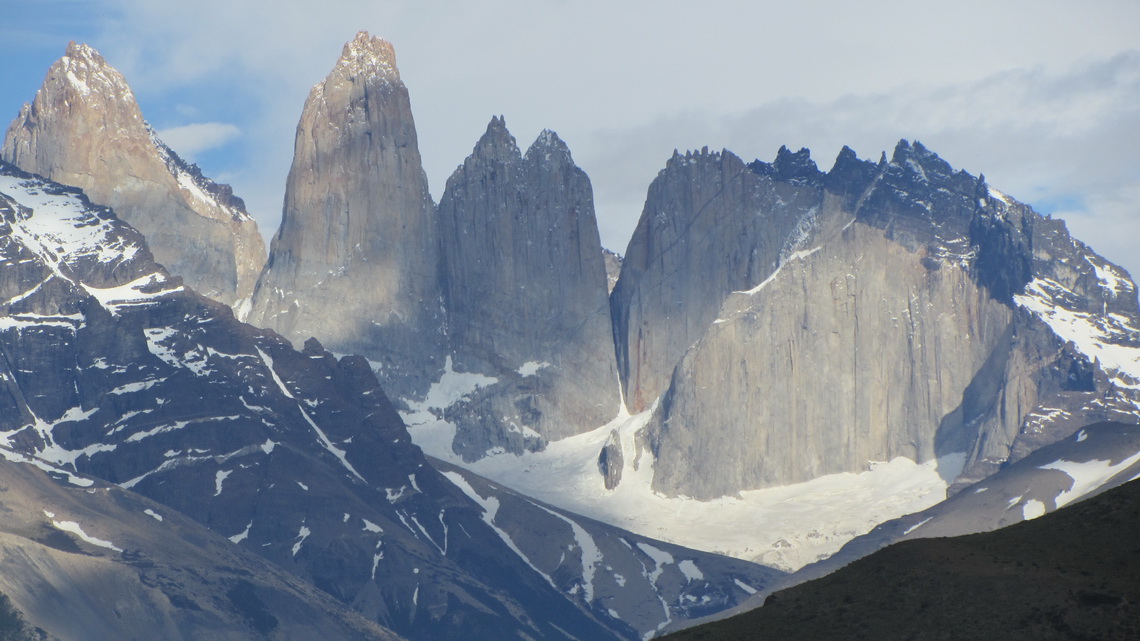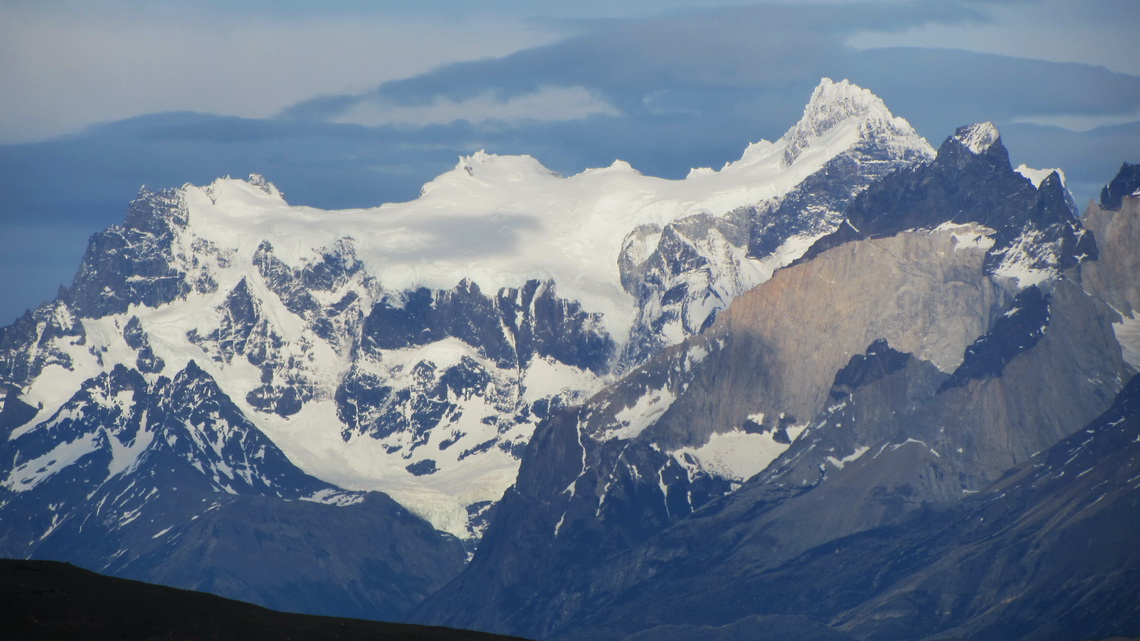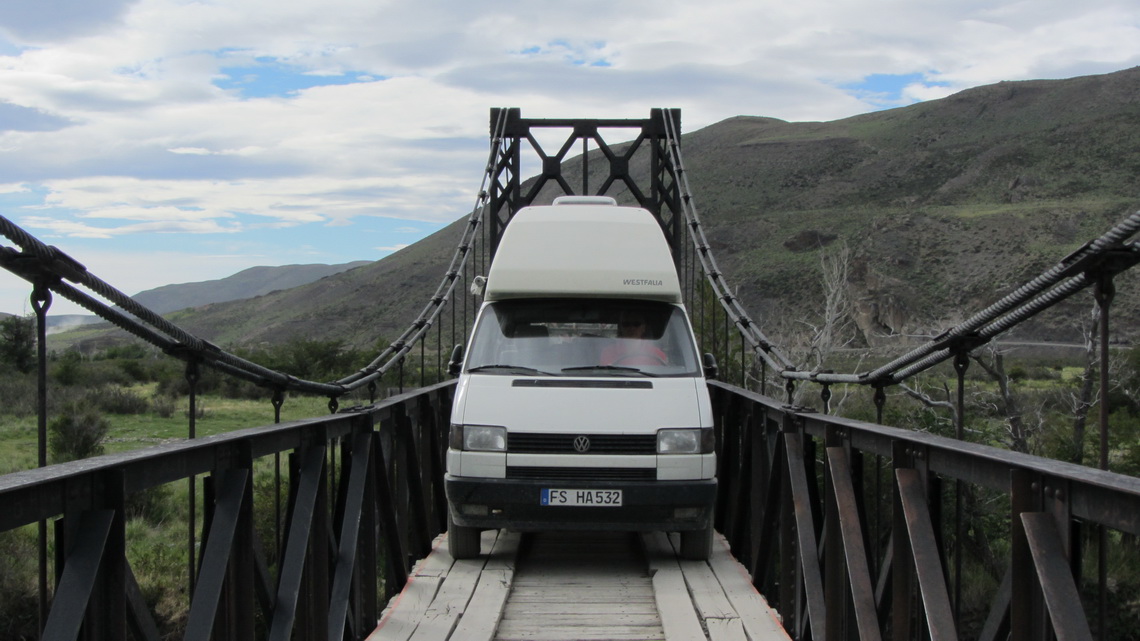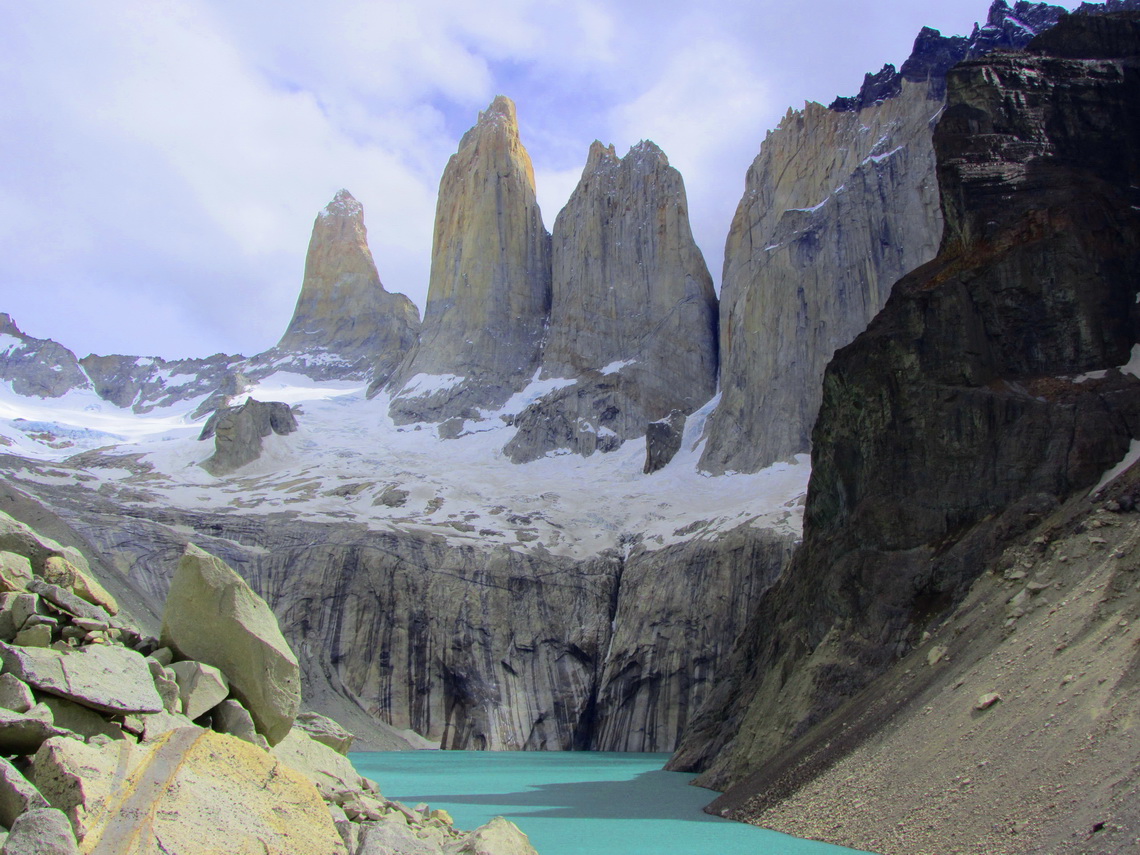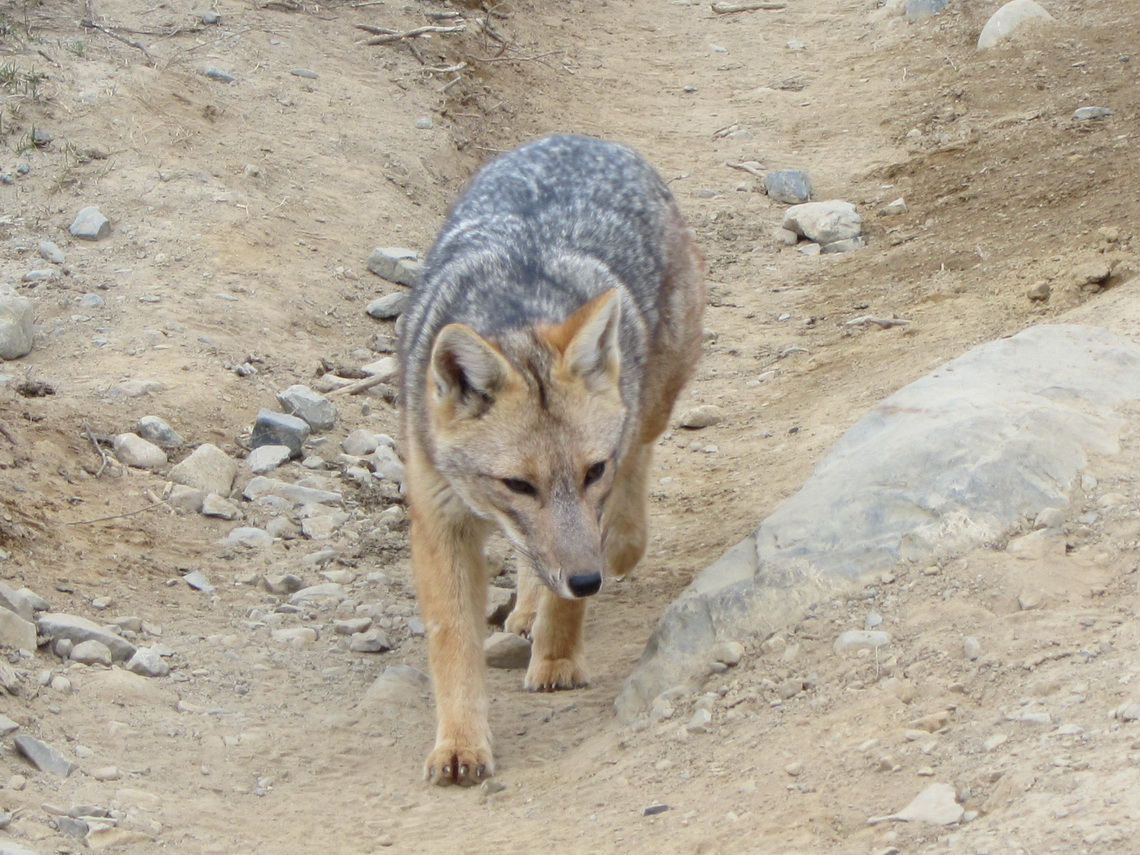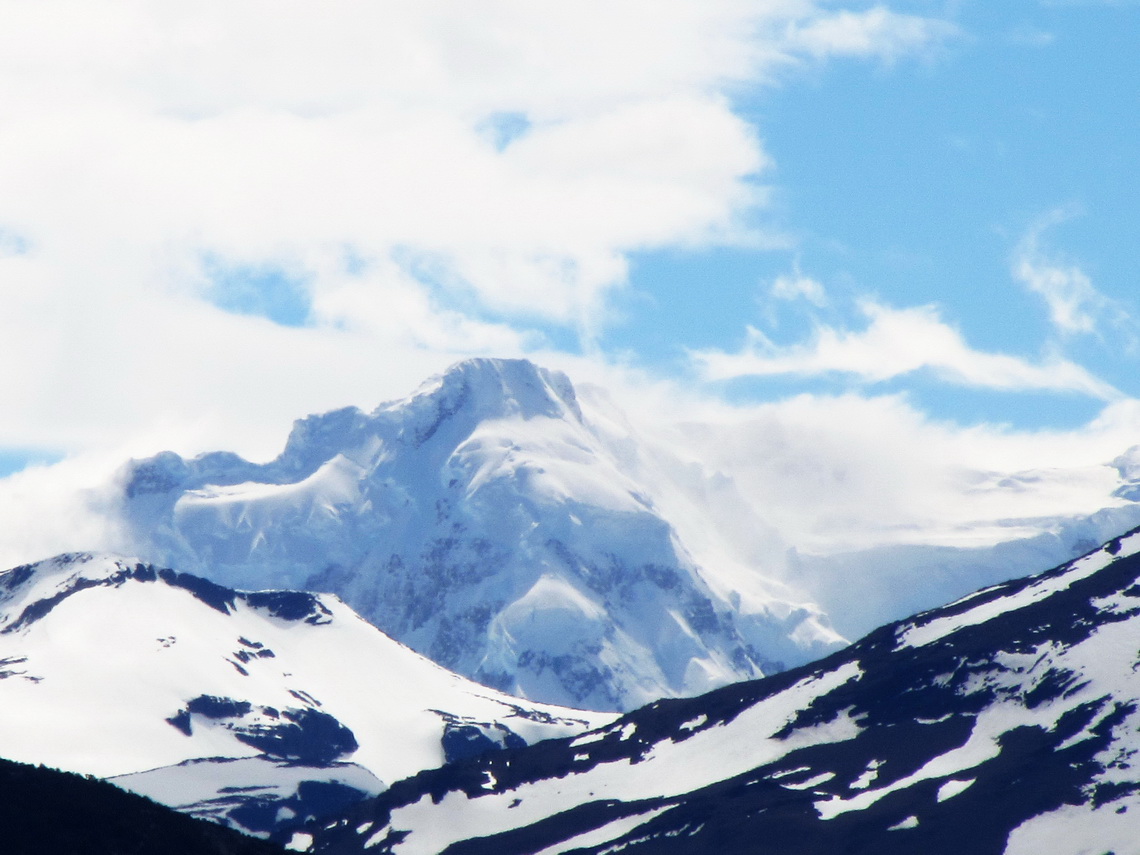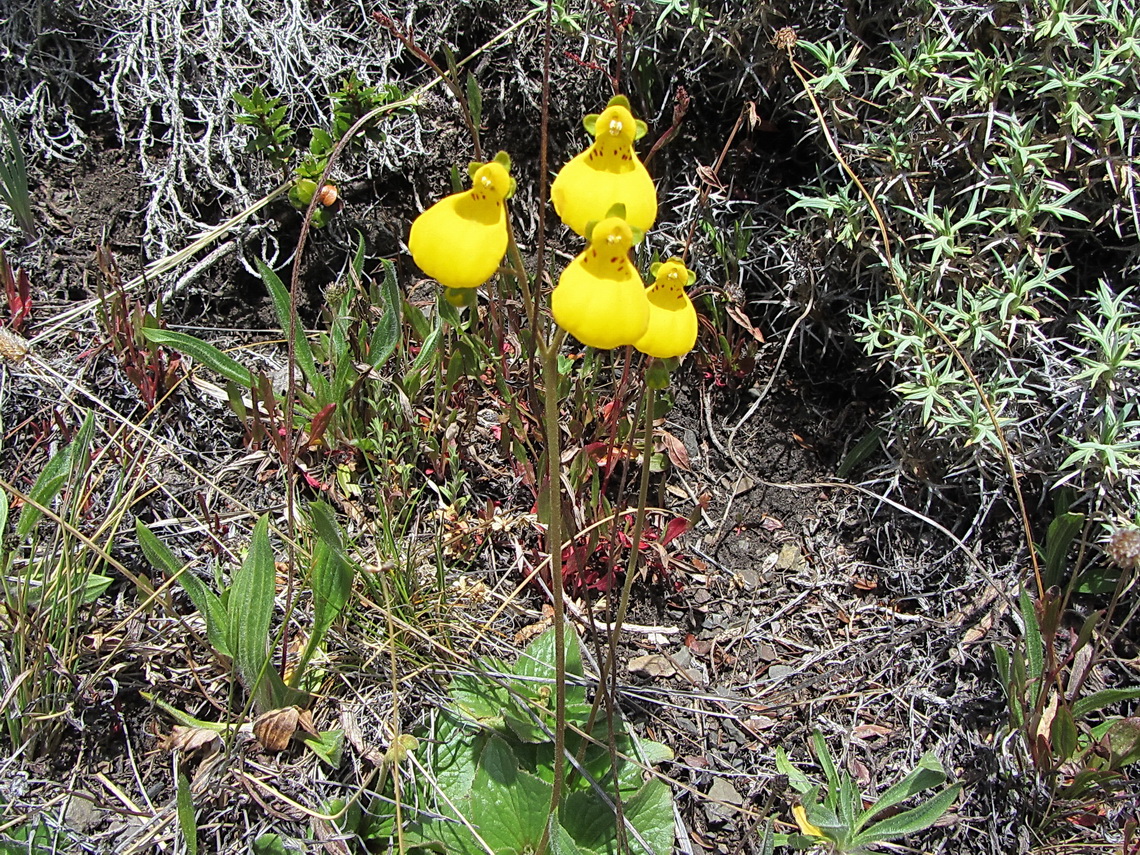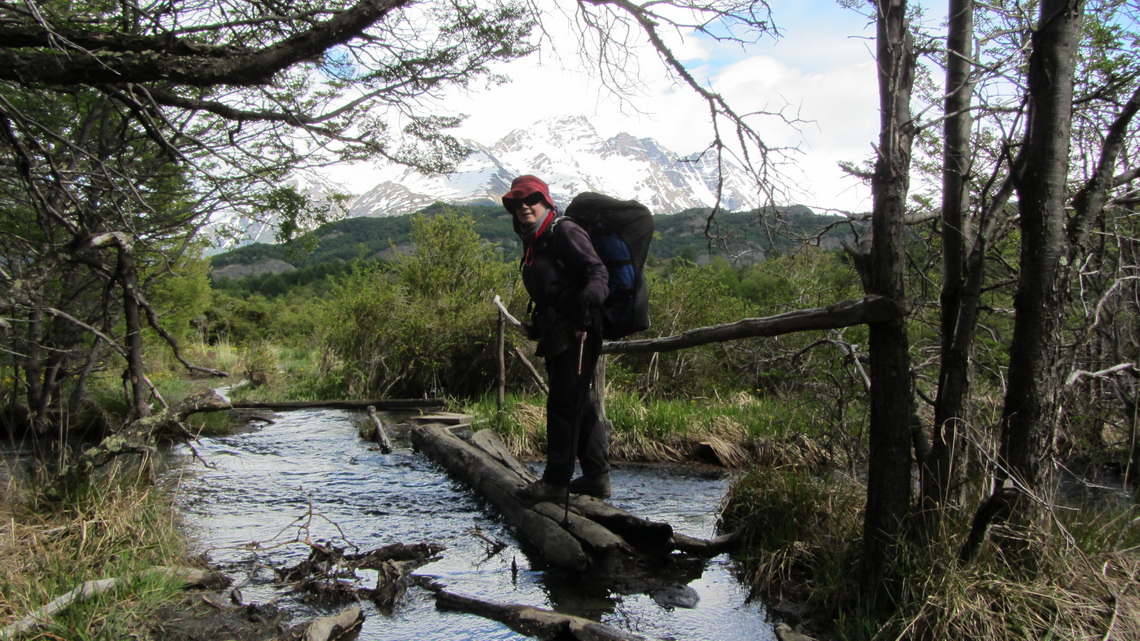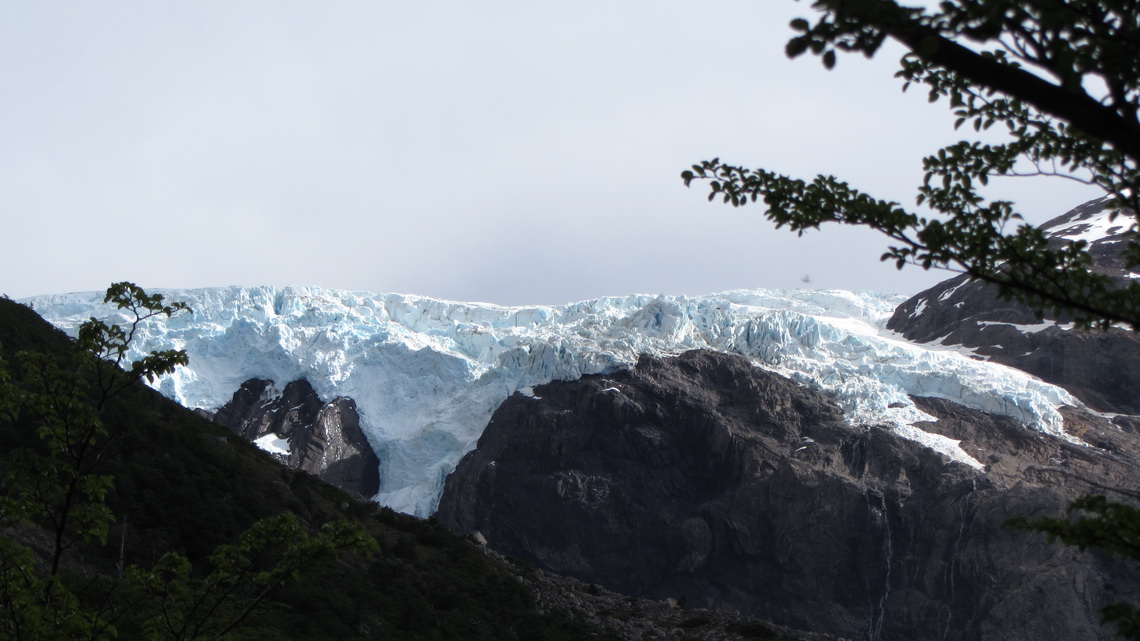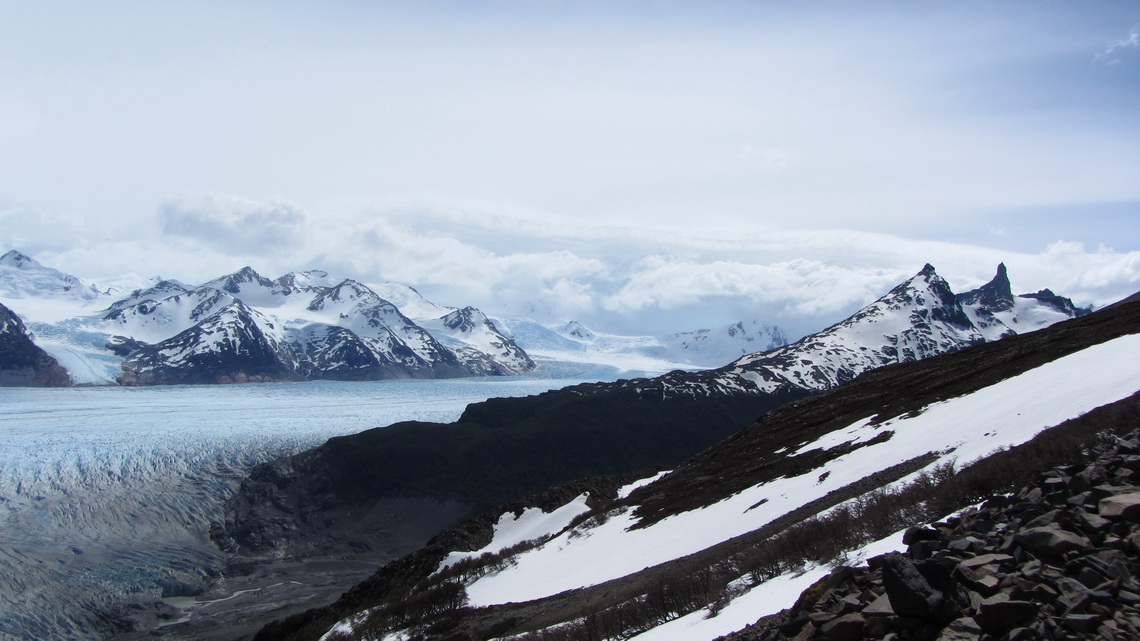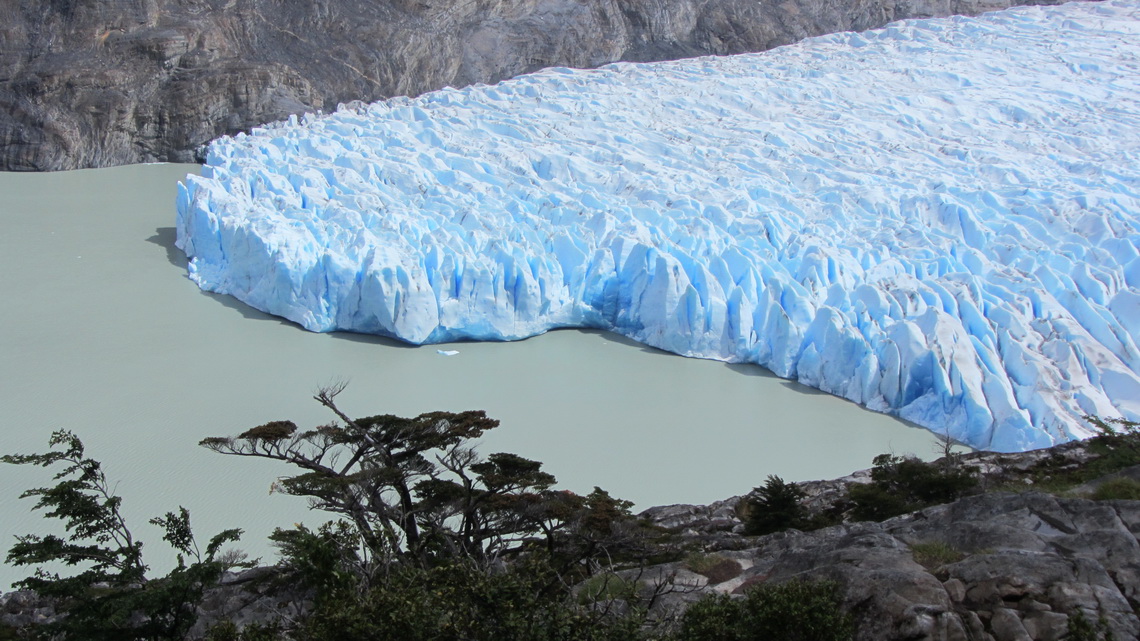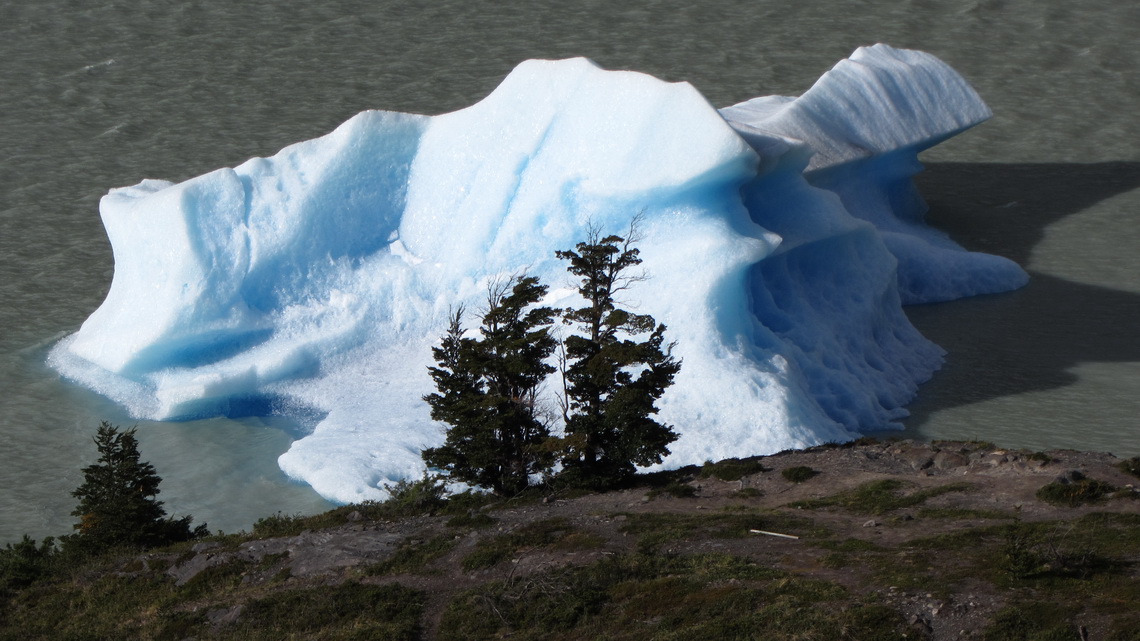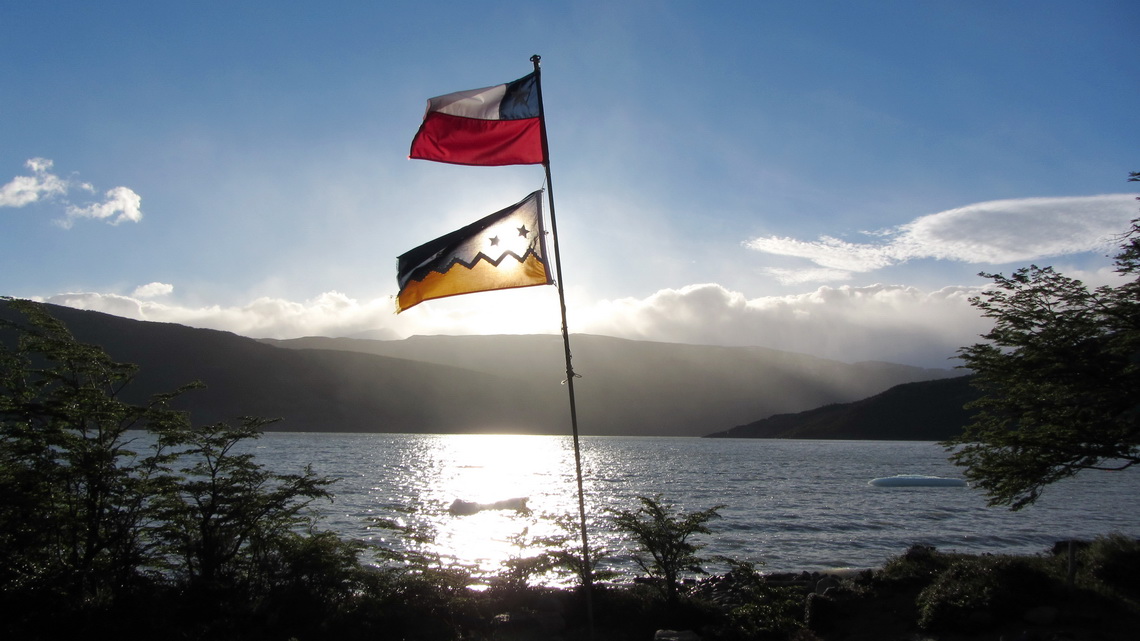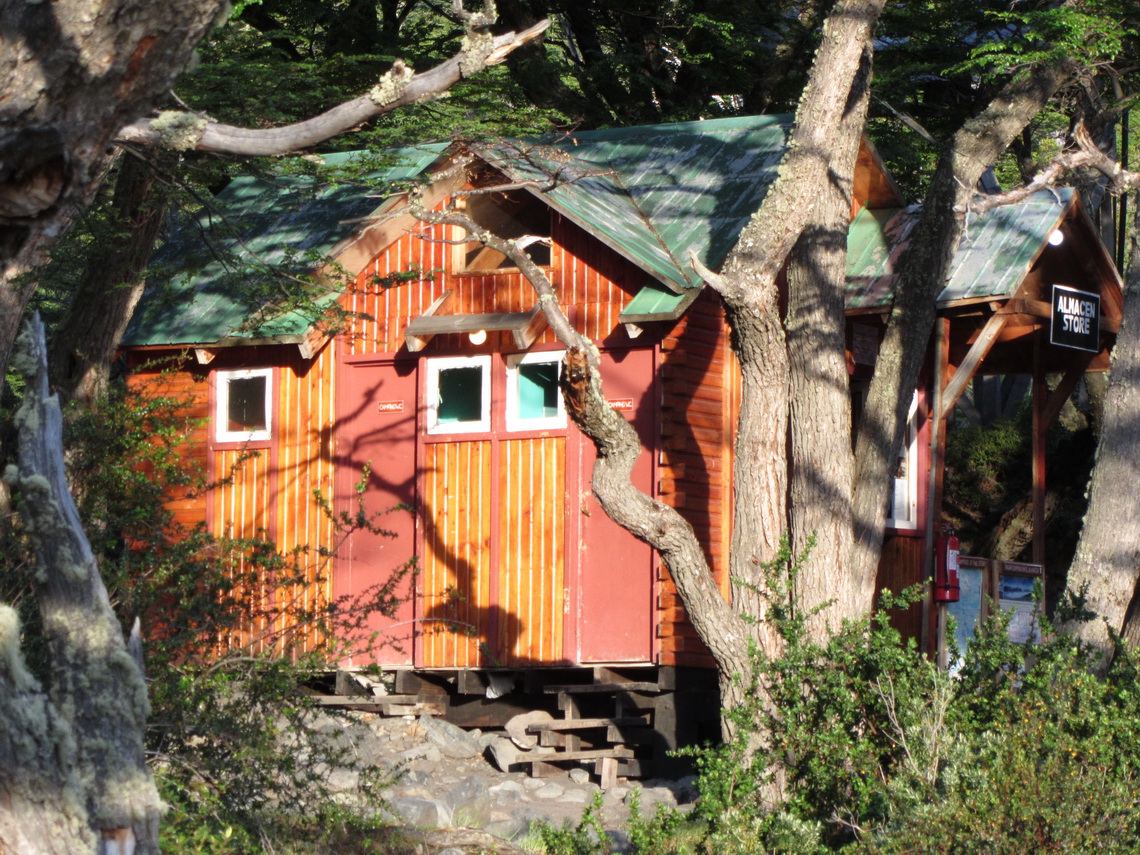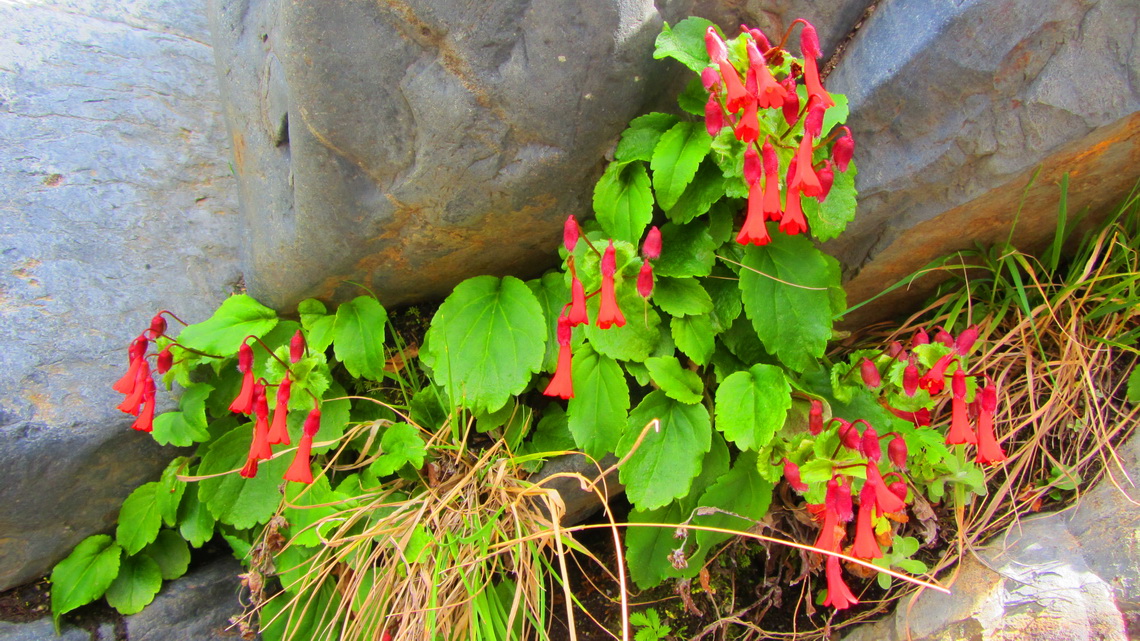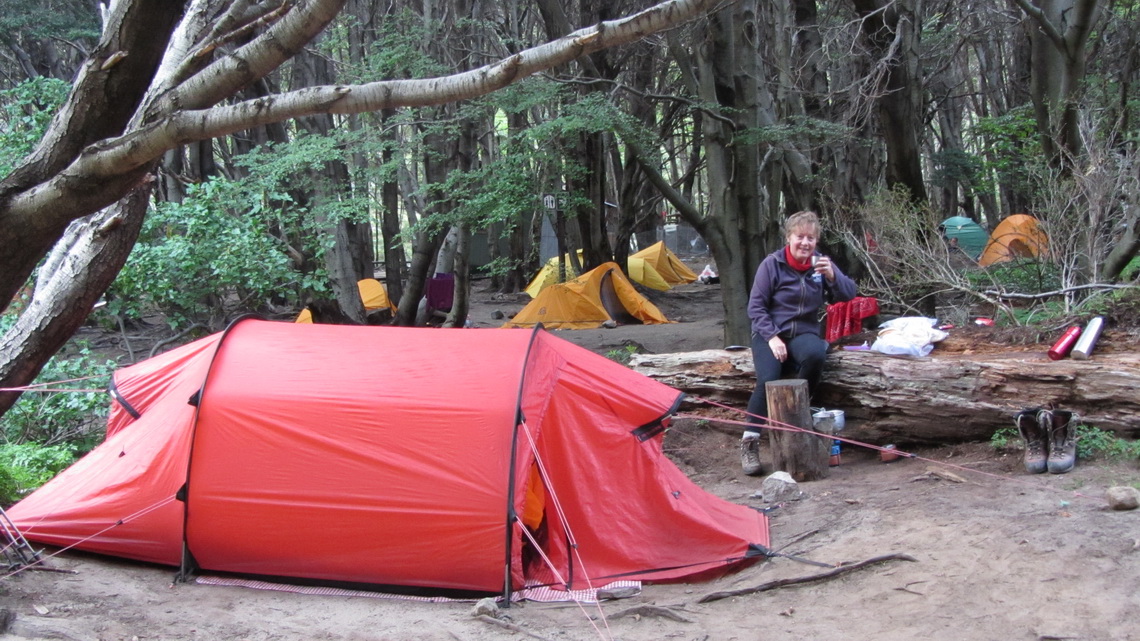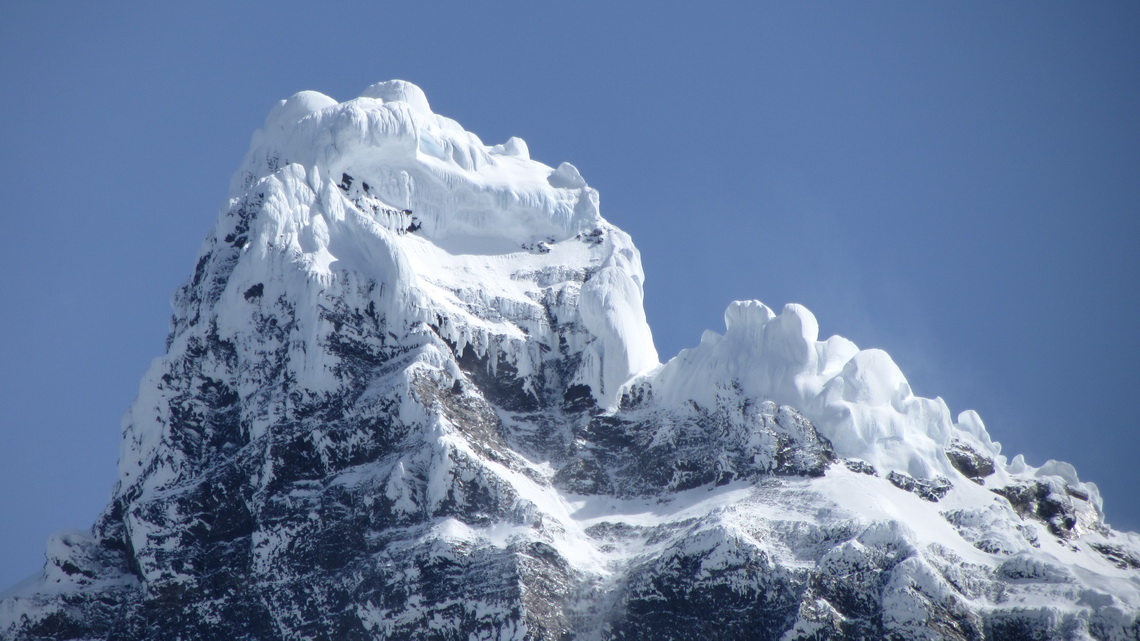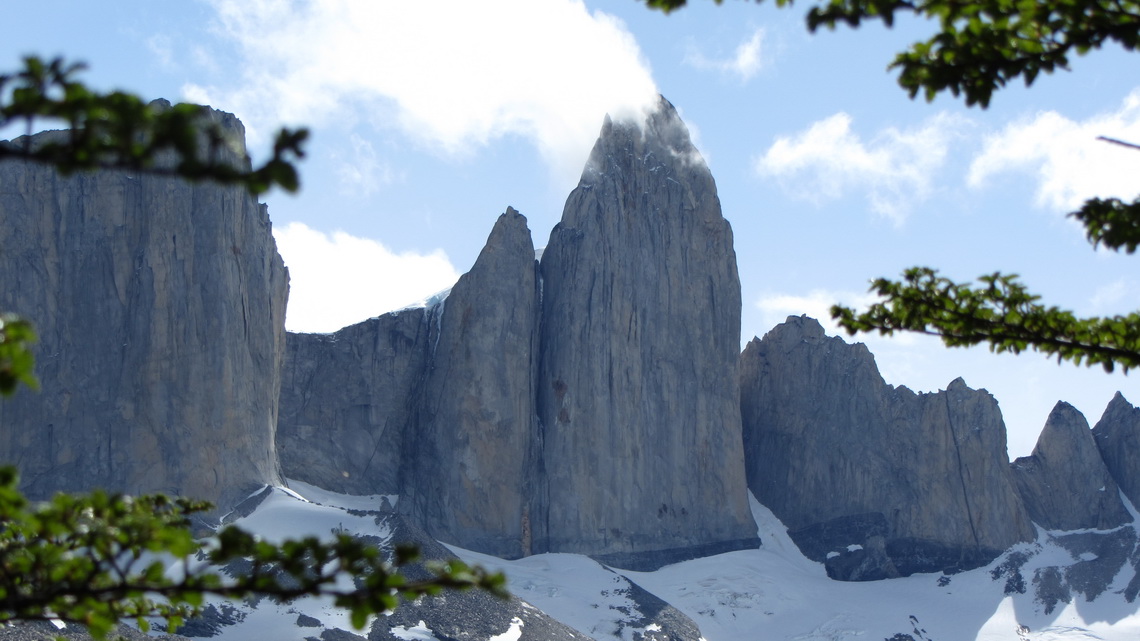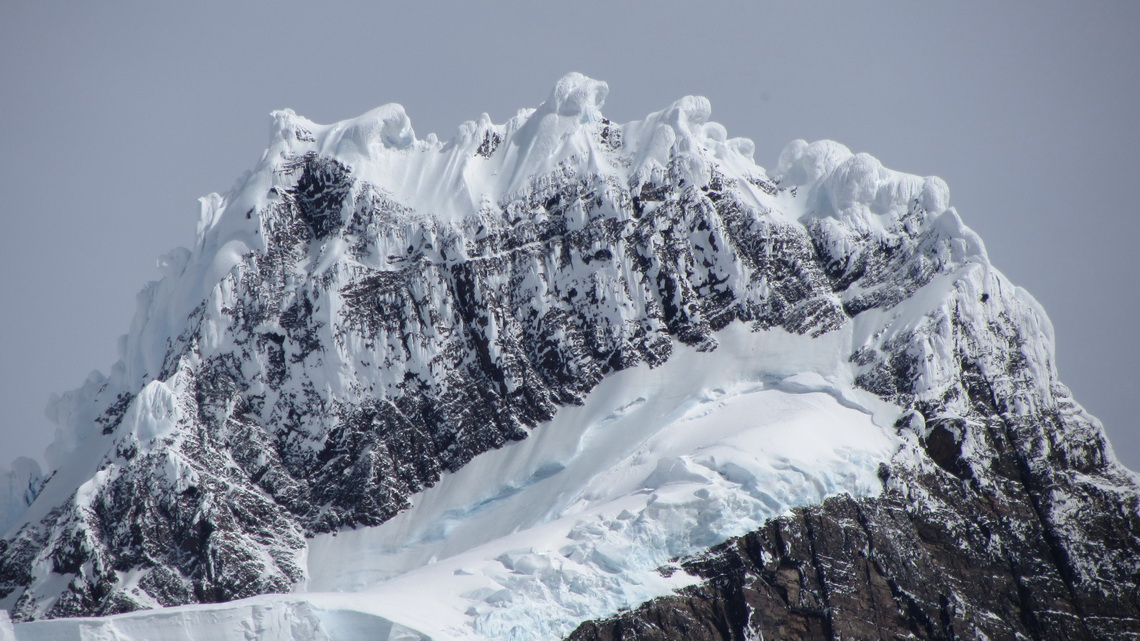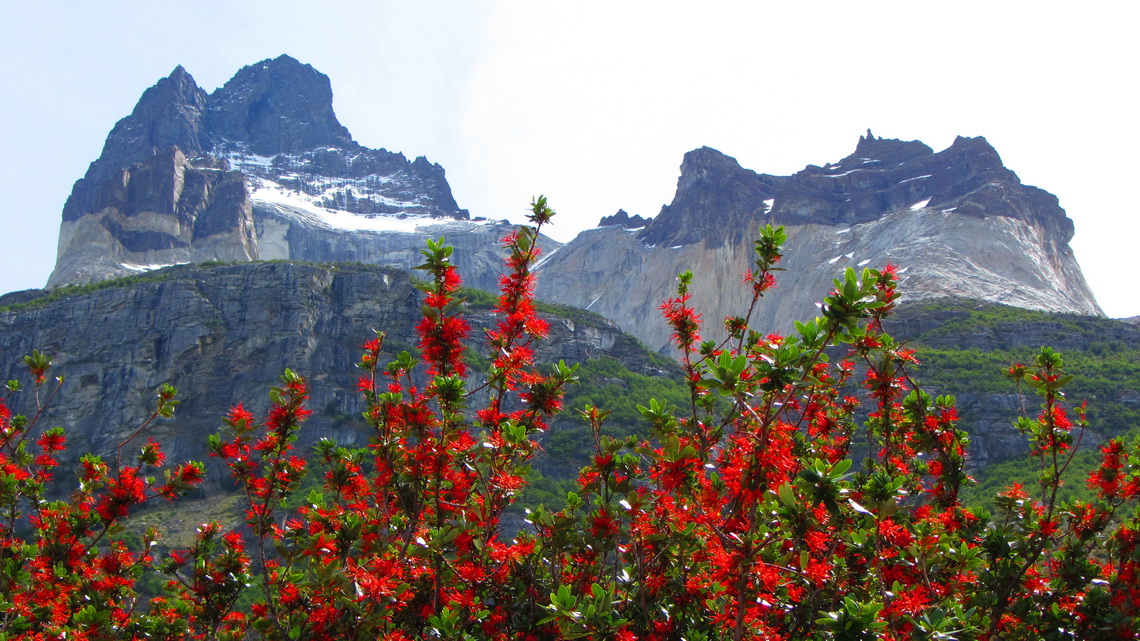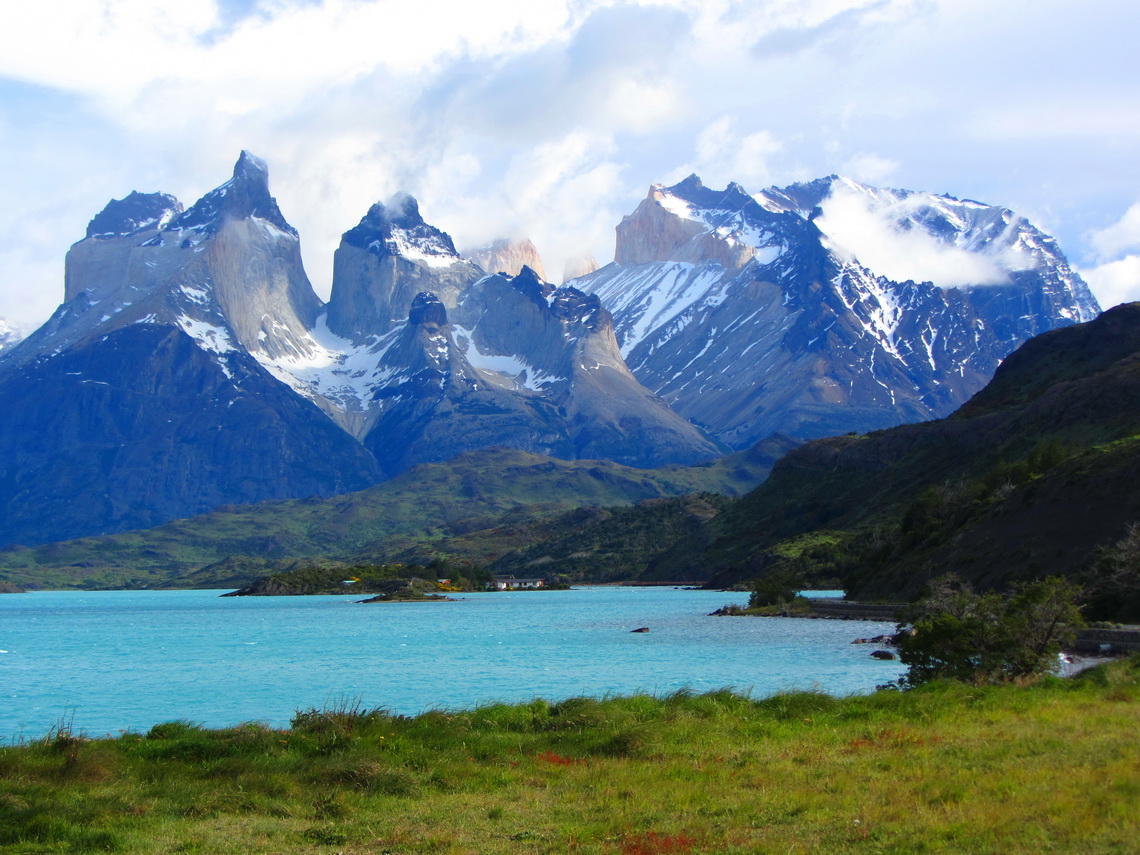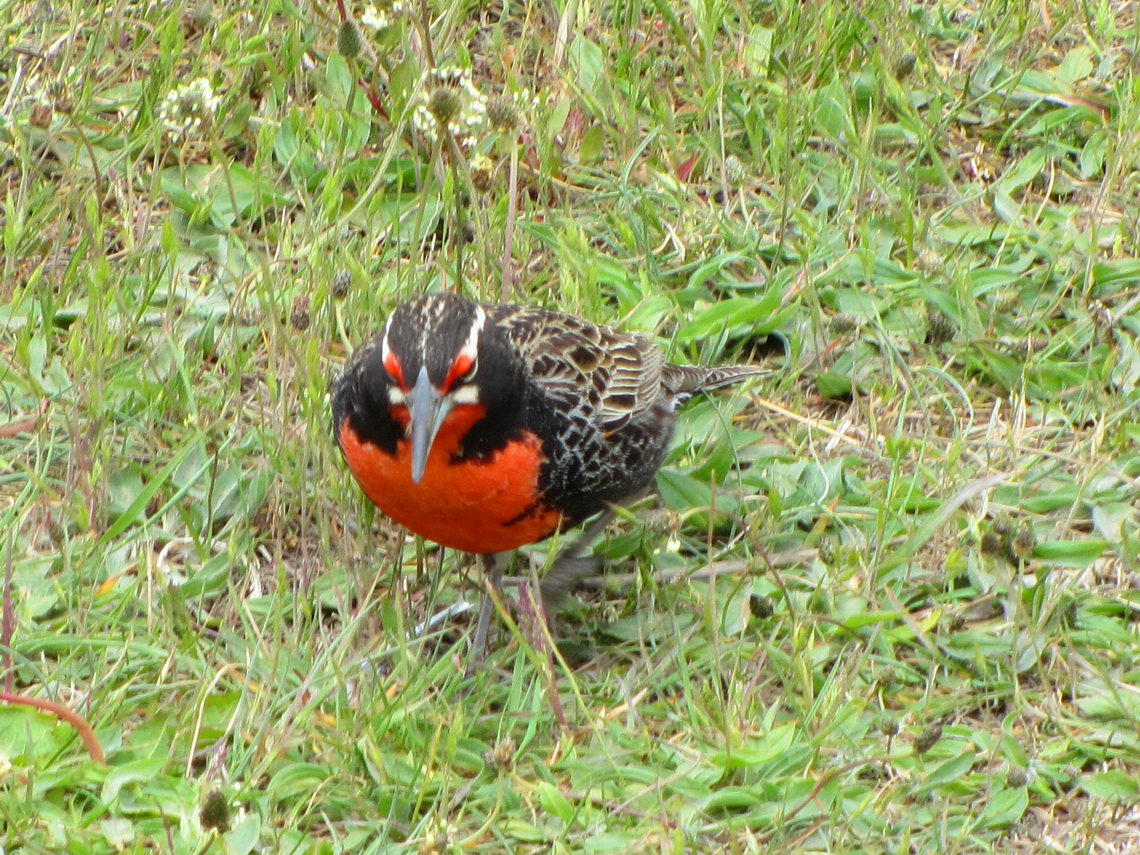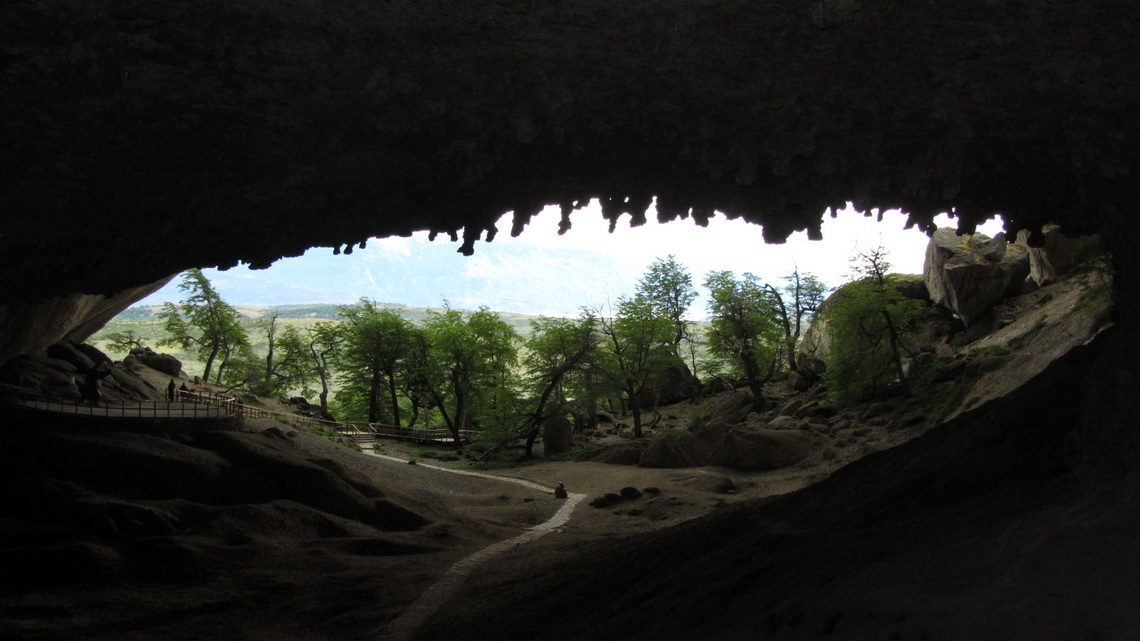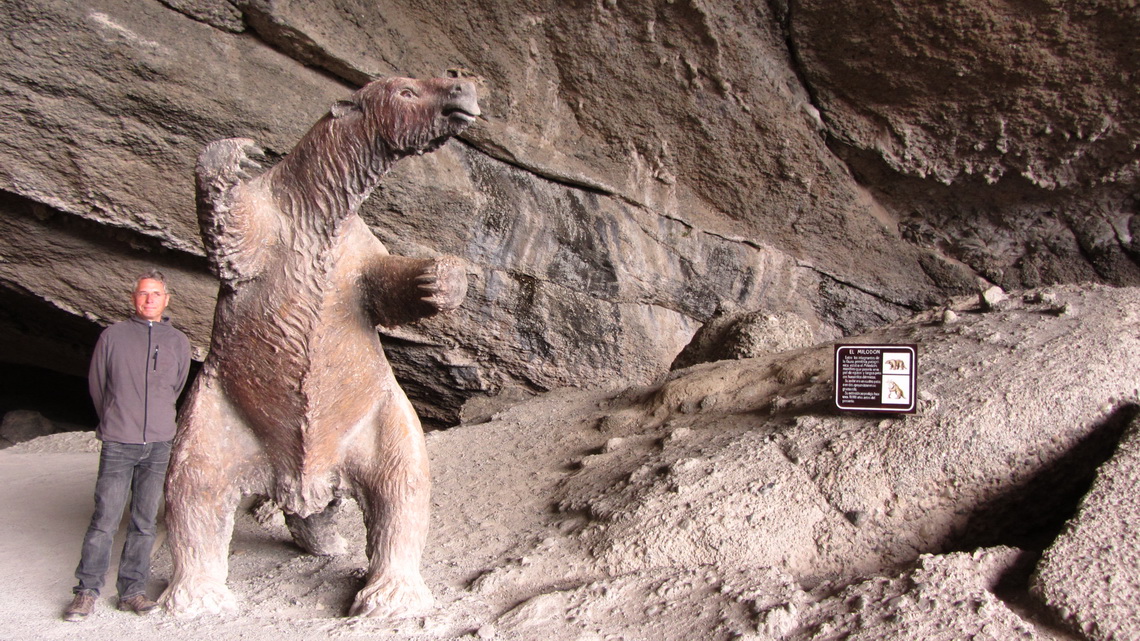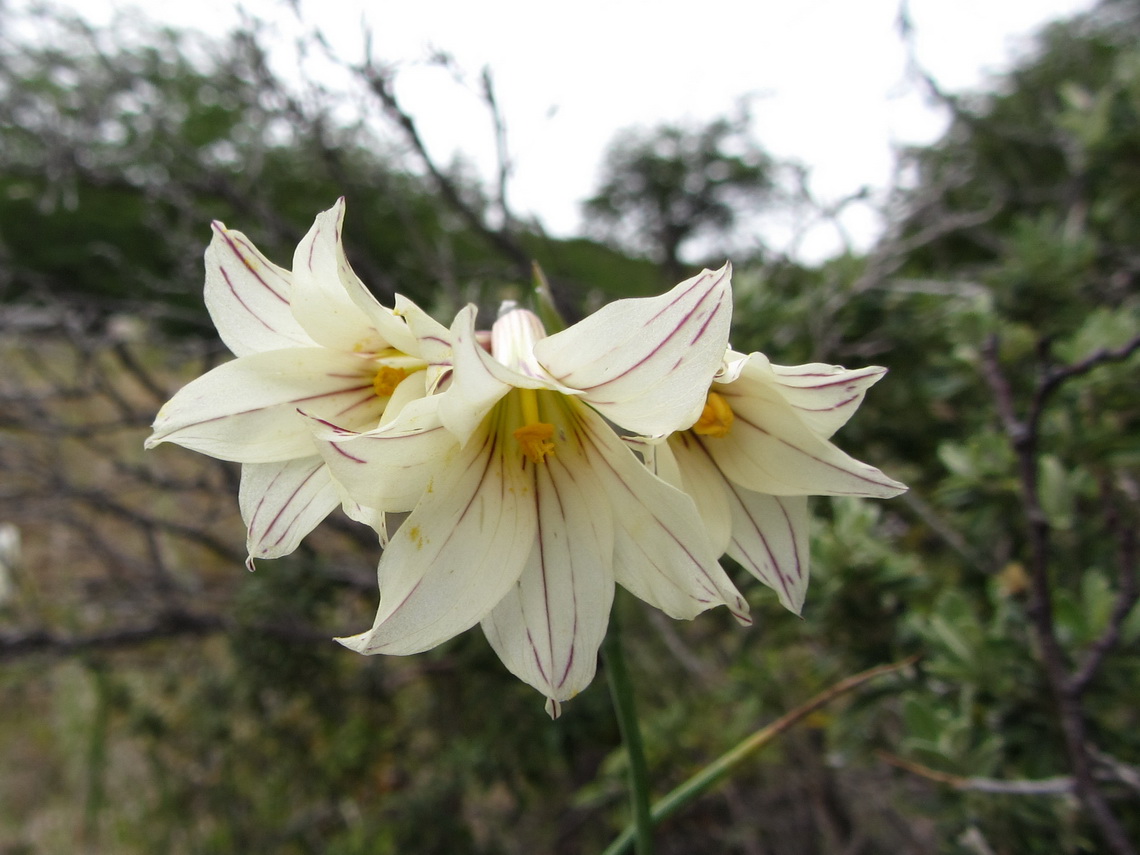The Torres del Paine National Park in southern Chile is probably the finest and most famous National Park of South America. Rising close to 3,000 meters above the Patagonian steppe, the Torres del Paine dominates the landscape with sensational granite pillars, spectacular glaciers and marvelous lakes. It provides excellent hiking possibilities like the more than 100km long Paine Circuit, which can be done in 8 to 10 days. All needed facilities like campgrounds with hot showers, mountain huts or food stores are available. but the weather is very changeable. It is located 150km North of Puerto Natales, the second biggest town of Chilean Patagonia.
Puerto Natales is on the windswept shores of Seno Ultima Esperanza - Last Hope Sound. The 16,000 people city is the bustling hub for the Torres del Paine National Park. Both, the city and the park, are very crowded with tourists between mid of December and end of February.
We crossed the Chilean border in the late afternoon of November 5th 2011 after a long drive. We were eager for some sport activities and suddenly we saw a sign Mirador Sierra Dorotea 5 km before Puerto Natales. We were a little bit irritated by the expensive fee of 10 bucks per person an elderly Lady charged from us, but she told us it is including tea or coffee. But we wanted to walk to the viewpoint. It became almost dark, when we arrived at the top after 1.5 hours walking, but the views were still outstanding.
When we came back in full darkness a rich evening meal with eggs, toasties, cheese and jam was prepared from the Lady. We were hungry like the wolves and we enjoyed the conversation with her, more or less in Spanish. For sure the 10 bucks paid off!
The next day we visited Puerto Natales and checked the weather forecast, which was excellent. Consequently we headed in the late afternoon in the direction to the Torres del Paine and found a reasonable sleeping place at the beginning of the dead end road to Laguna Verde. On the next morning the views were stunning.
We saw a track on the map from the Laguna Verde to the Mirador Sierra del Toro, which is 1153 meters high and a 3 to 4 hours hike. We decided to drive to the end of the dead road, the Estancia Laza at the Laguna Verde and starting point of the tour.
There was was no real path to the Mirador Sierra del Toro and we had to search our own way. Fortunately a fence crossed the forest part of the way. The last 2 hours hike to the summit was an arid, windy, flat and endless slope. But the views were unbelievable and we were totally alone.
Clear sky on next morning with fantastic views. We decided to do the 4 hours trip to the base of the towers - a must to do in this region. These towers gave the name Torres del Paine to the National Park: Torres - towers.
We intended to drive with our car to the Hosteria Las Torres. A park ranger had told us that this is possible but we have to turn our exterior rear-view mirrors at the bridge Puente Kusanovic. When we arrived at the bridge there was a sign: Maximum weight 1.5 tons. Consequently we did not continue because the weight of our camper is 2.8 tons. Suddenly a bus came with more than 20 people. The people walked over this bridge and the bus drove. For sure it has much more weight than 1.5 tons and our car!
Mirador Las Torres is a magic place with an overwhelming view to the Torres and the glacier on foot of them.
Besides the fact that many people used this nice day for the trip to the Torres a nice guy visited us and nibbled on Marion's backpack.
With heavy backpacks we started counter clockwise the Circuito Grande from the Guarderia Laguna Amarga in the early afternoon of November 7th 2011. Our car was parked very close to the Guaderia, where we had spent the night without any costs.
The first part of the was a little bit sad because a huge area of the forest due to an incautious trekker in 2005. Fire is strictly prohibited in the park and we saw and understood why. But he scenery was outstanding because we walked along the Rio Paine between the glaciers coming down from the Campo de Hielo Sur and the Torres del Paine. Besides that we were totally alone and the vegetation was in full blossom - it was late springtime!
The first guided campground Campamento Seron had hot showers. On the next day we walked along the Lago Paine and intended to stay the night at the free Campamento Coiron because the way to the next guided camp on the lake Lago Dickson is very long. But we did not find it; so we stayed the night in between, in the middle of nowhere. Free means without any costs but with basic facilities.
The rangers of Lago Dickson prepared us the best coffee we got in South America so far for just half a buck. After Dickson the way turns into the valley of Rio de los Perros (Dog River) and becomes steeper.
The camp Los Perros is with 600 meters sea level the highest camp of the Circuito Grande. Thus it became very cold in the evening but there was a shelter with an oven. We met two other younger German couples there and we chatted a lot. The ranger was very nice. He donated us some chips and dried fruits. You have to take into account that everything must transported by backpack or horses to this place!
The next day was the D-Day because we had to cross the pass Paso John Garner which is with 1229 meters sea levels the highest point of the Circuito Grande. It is famous for ugly weather like heavy storms, horizontal rain and deep snow fall even in mid summer.
We slept the fourth and fifth nights at the free Campamento Paso. It was raining cats and dogs the whole day. Few people cam down from the Paso John Garner very wet and exhausted. They had seen nothing but enjoyed violent storm, groundless snow and impetuous rain. We were very lucky to cross this pass by nice weather and staying this day more or less in our tent and sleeping bags. In the next morning the weather was still weird but it stopped raining, finally.
We were very happy about the hot showers of the campground Lago Grey. The weather became beautiful in the late afternoon. Fortunately our tent, sleeping bags and other stuff became dry soon.
The near-by hotel served us a rich dinner for acceptable costs - our first warm meal after 6 days not made with instant soups. It was delicious and we enjoyed the conversation with three Chinese Ladies from Seattle.
We saw much more people in the following parts, because the Circuito Grande now is identical with the W trek, the most popular tour of 4 days in the Torres del Paine. But we still mostly alone on our way, because it was off-season. But the large campgrounds and facilities showed us how crowded it might be between mid of December and end of February.
The next camp is the free Campamento Italiano, where we spent again two days. And we had one liter of red.wine, which we had purchased on the way in the Lodge de Montagne Paine Grande. We met people from nearly the whole world there like a couple from Denver, another one from Barcelona and a journalist from Colombia.
It was very comfortable to hike 4 hours into the valley Valle Del Frances to the magical viewpoint Mirador Británico. First it was cloudy, but we waited until the mountains became clear.
The weather on our last day was superb again. And we had lighter backpacks, because we had eaten our complete remaining food in the Campamento Italiano.
When we arrived at 1:00PM at the Alberge Los Cuerons we saw the staff eating. Indeed we got the same lunch for a very low price - It tasted wonderful. The very last part was hiking along and above the impressive and long lake Lago Nordenskjöld to the Hosteria las Torres, which we knew already from our trip to the towers. Luckily there is a bus service to Guarderia Laguna Amarga, but we had to wait a little bit more than one hour. We spent the time chatting with the couple from Denver, their friend and another US citizen who was on the way to Mount Vinson the highest peak of Antarctica.
It was close to 9:00PM when we came finally to our car and we were very tired so we stayed this night there. On the next day we desperately needed hot showers. We found the remote campground Pehoe in a fantastic environment. But it was expensive, charging us 3 bucks for five very small and old bagels was an impudence.
On the way back to Puerto Natales we visited the huge cave Cueva del Milodon. The Milodon is a huge mammal which disappeared 8,000 to 10,000 years ago. It is one of the emblems of Puerto Natales.
Few weeks later on Christmas 2011 we returned to the Torres del Paine National Park to explore the beautiful, remote and exciting area West of Lago Grey - to see this article click here
For more pictures, please click here For a map of our itineraries, click here
To download the GPS coordinates file of Chile, click here
